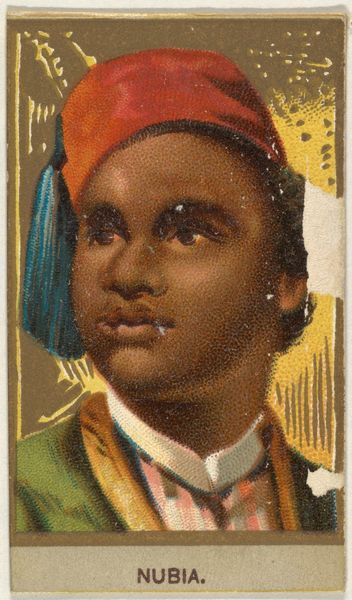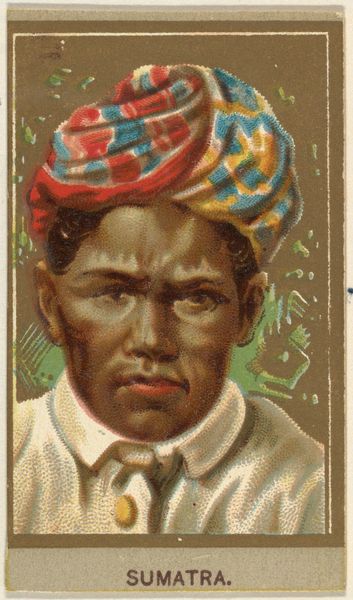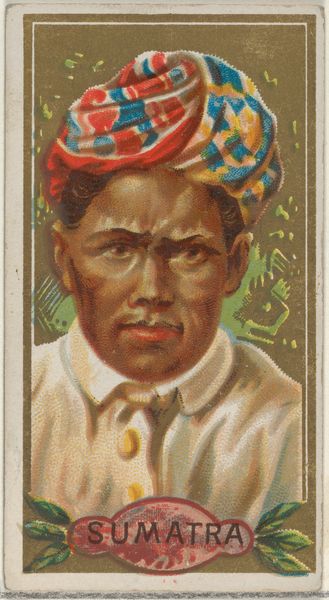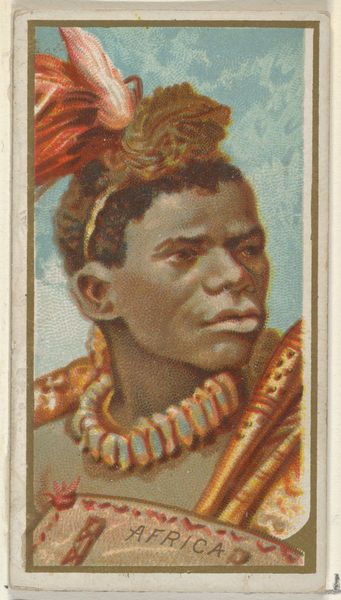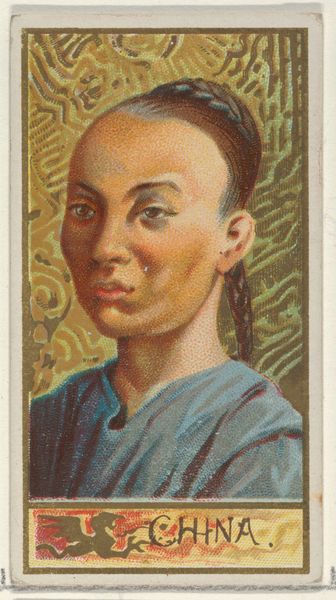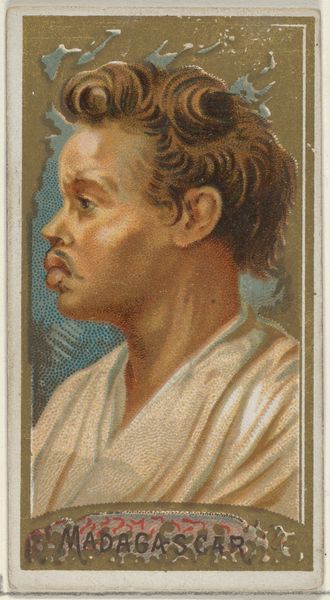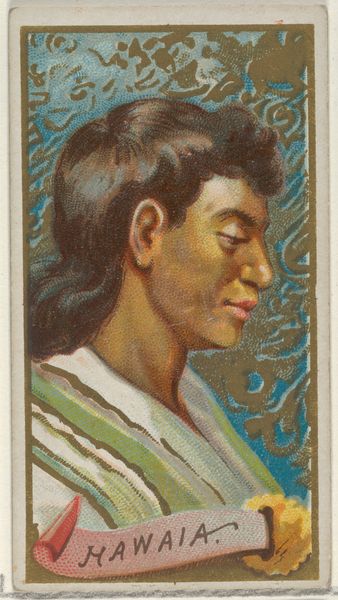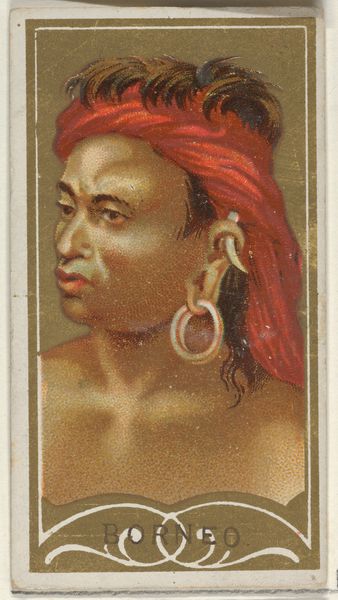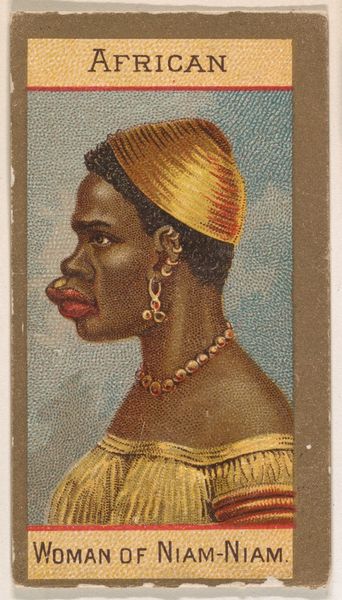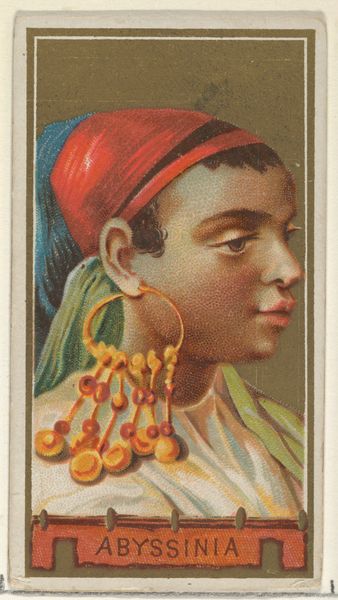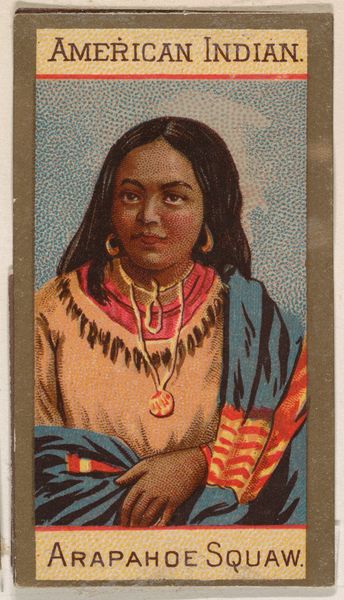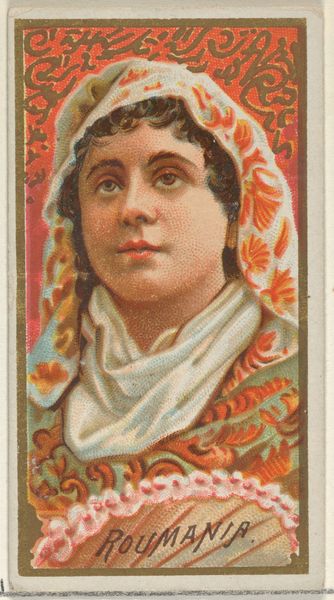
Nubia, from the Types of All Nations series (N24) for Allen & Ginter Cigarettes 1889
0:00
0:00
drawing, graphic-art, print, photography
#
portrait
#
drawing
#
graphic-art
# print
#
impressionism
#
photography
#
men
#
portrait drawing
#
portrait art
Dimensions: Sheet: 2 3/4 x 1 1/2 in. (7 x 3.8 cm)
Copyright: Public Domain
Curator: So, this vibrant little card is titled "Nubia, from the Types of All Nations series," dating back to 1889. It's part of a collection produced by Allen & Ginter Cigarettes. Editor: It has such an assertive presence, considering its diminutive size. There’s a directness in the sitter’s gaze, though I find the idealization unsettling. What's going on with the "Types of All Nations?" Curator: This series reflects the late 19th-century fascination with ethnographic documentation, a pursuit often tinged with colonial agendas. These cards, distributed with cigarettes, were essentially promoting both global awareness and, simultaneously, a racial hierarchy. "Nubia," of course, refers to the region south of Egypt. Editor: And that's precisely what I find so disturbing. We see what looks to be a portrait, but its intended audience almost certainly engaged with this as an exotic specimen. The composition seems to emphasize that "otherness", from the clothing, the headwear, to the lighting which appears designed to accentuate darker features in very particular ways. Curator: Precisely. The politics of representation are palpable. This card flattens complex cultural identities into a single "type," reinforcing stereotypes. But these images also reveal a great deal about the cultural biases of the period that produced them, not about Nubian culture itself. What are the politics embedded in the gaze in this era? Editor: It also served a didactic purpose. I mean, they become tools in constructing a public perception of the world, a world neatly packaged according to the biases and assumptions prevalent at the time, which for that era often included the visual subjugation of others, their places and belongings. And I wonder how widespread such depictions became. Curator: Massively. Circulated widely. What this portrait can offer contemporary viewers is a lens into understanding how cultural narratives get constructed and disseminated, particularly in commercial contexts. It forces us to critically examine the power structures embedded in visual culture and the continued impact on representational diversity. Editor: Definitely a potent little object with a long and unsettling cultural ripple effect. It encourages us to be careful and precise about where we put our consumerism and awareness these days.
Comments
No comments
Be the first to comment and join the conversation on the ultimate creative platform.
